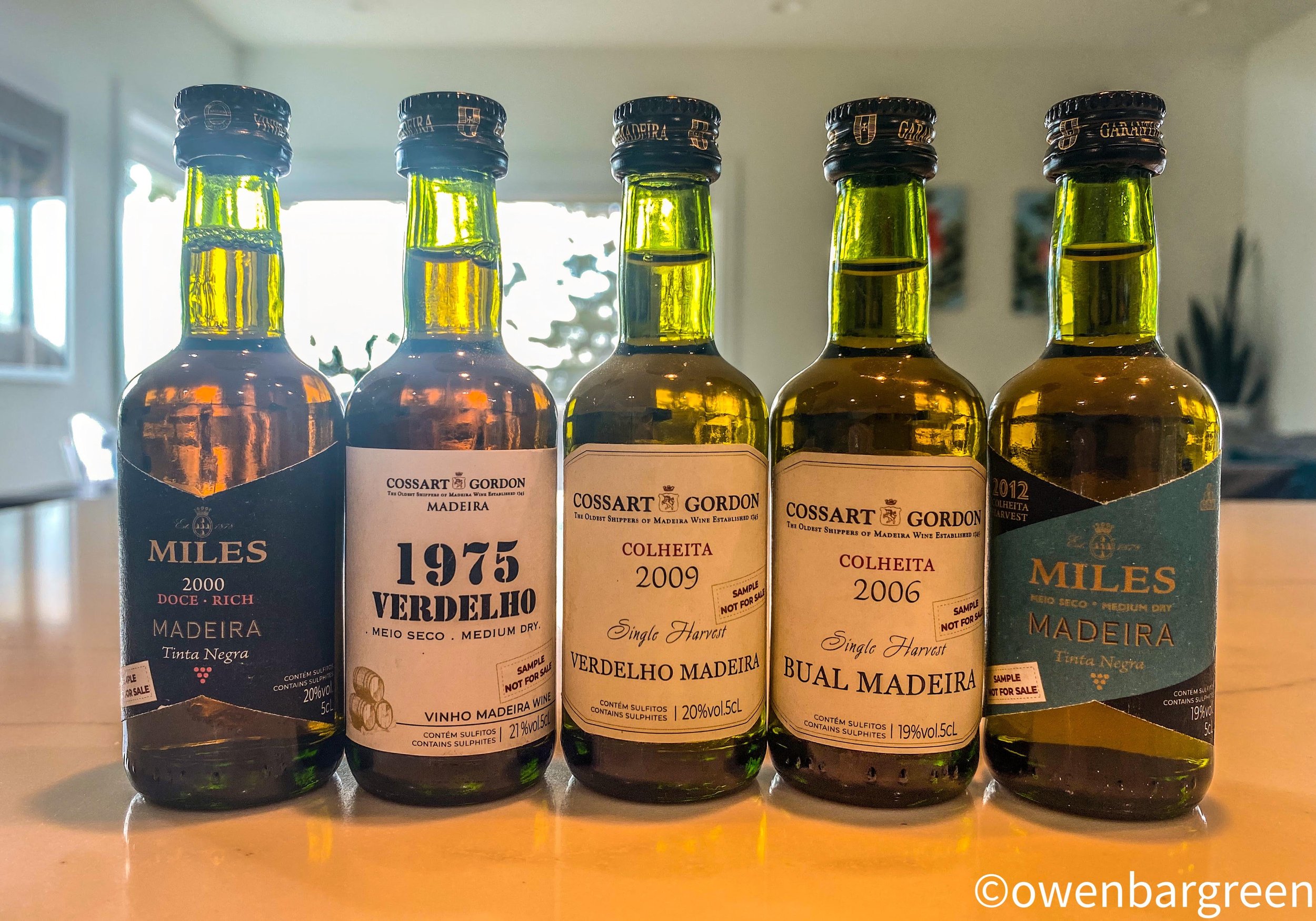For years I have been enchanted by the wines of Madeira. The name ‘Madeira’ originates from Portuguese name for a carpenter, from madeira ‘wood’ and is also named after the island of Madeira —which was named with Portuguese madeira ‘timber’ because of the timber that grew there. The island was colonized in the 15th century under the patronage of Prince Henry the Navigator, Joao Goncalves Zarco and Tristao Vaz Teixeira who were all were driven by a storm to the island they called Porto Santo in 1419. Amazingly there is no record of anyone living on this island prior to that time. There are some suggestions that Africans may have come to Madeira, just as the Vikings may have visited. In the fifteenth century the world of refining sugar came to the island to cater to the taste of the Europeans and through the seventeenth century sugarcane production became the island’s primary production.
Wine had also been produced, but was not nearly as popular as sugarcane production. We do have records of winemaking in Madeira back to the end of the 15th century and also records of preventing wines from spoiling using a neutral grape spirit. During long voyages the wines would be exposed to excessive heat and movement which changed the flavor of the wine. It is likely that this was a catalyst for the current standard of winemaking on Madeira which involves oxidizing the wine through a process of applying heat and also barrel aging the wine. Younger wines are typically crafted by using a method that accelerate the aging process by applying heat in tanks. and the aging potential while the top wines, the colheitas and frasqueiras are produced by the canteiro method. The word"canteiro" comes from the traditional supporting beams on which the oak casks are placed. This process involves the ageing of the wines in casks for a minimum period of 4 years stored under the rafters of warm attics, exposed to the natural warmth of the sun that gently heats the wine.
Wines made in the “canteiro” system are stored in casks by variety name and vintage under old rafters at the lodge. These casks are warmed by the tropical climate and evolve to be highly concentrated. The wines are slowly moved down from the top to cooler temperatures. Because of these methods of production these wines are very long lived and those produced by the canteiro method will survive for decades and even centuries, even after being opened. Wine are typically made in the style of being either dry, medium-dry, medium-rich and rich. All wines are typically between 17 and 21% alcohol. Some varietals used include Sercial, Verdelho, Terrantez, Bual, Malmsey, and Tinta Negra.
I recently had the chance to review wines from two top Madeira producers, including some wines aged back to the 1970s. I am honestly quite floored by the overall quality of both producers which are wines that all have some tremendous cellaring potential. I loved the 2006 Cossart Gordon Bual Madeira (OB, 92) which is already beautifully evolved and shows great nutty and scotch notes. I was blown away with the 1975 Cossart Gordon ‘Verdejo’ Madeira (OB, 97) which literally brings a cornucopia of aromatics and flavors. Here are my tasting notes from the recent releases by Cosstart Gordon and Miles Madeira.
1975 Cossart Gordon Verdelho Madeira- The near 50 year old 1975 Cossart Gordon Verdelho Madeira is a masterclass by this esteemed house. It is intense, rich and layered with insane flavor range from kumquat zest to red cherry and guava notes alongside almandine and cinnamon sticks on the palate. Drinking beautifully now, this will surely live on for another ten plus years. Drink 2022-2040- 97
2006 Cossart Gordon Bual Madeira- Sensational on the nose with white raisin and ripe red cherry candy notes, the 2006 Bual Madeira is very fresh once on the mouth, with a touch of sweetness. Highlands scotch and toasted Macadamia nut notes combine with ripe red raspberry on the palate. Finishing long, this is beautiful stuff to consume now and over the next ten plus years. Drink 2022-2032- 92
2009 Cossart Gordon Verdeljho Madeira- The really good 2009 Cossart Gordon Verdeljho Madeira delivers tangerine peel, wet stone and peat moss tones on the nose. The palate is very fresh and lithe, producing tons of mouth-watering acidity after every sip. Finishing very long with nectarine, kumquat and white rose water, this is beautiful wine to consume now and over the next ten plus years. Drink 2022-2032- 93
2000 Miles Rich Tinta Negra’ Madeira- The 2000 ‘Rich’ Tinta Negra shows off toffee notes on the nose with roasted hazelnut and coffee ground accents. The palate is dense, lush and full of earthy tones. Still showing good finesse, the 2000 ‘Rich’ shows gobs of salinity and a smooth mouthfeel throughout the drinking experience. Drink 2022-2032- 94
2012 Miles Tinta Negra Madeira- The 2012 ‘Tinta Negra’ shows off creme caramel notes alongside lemon rind and cinnamon dusted brioche on the nose. The palate is soft and ripe with rich orchard and citrus fruit flavors, with plenty of grip and verve. Drink 2022-2032- 91

